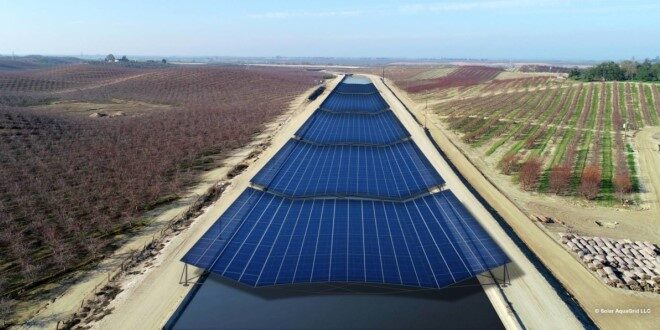California’s Central Valley will soon be home to not one, but two solar panels over canals projects following investments by the state and federal governments.
Governor Gavin Newsom announced last week that $20 million has been earmarked for a solar over canals pilot project in Turlock, and the Department of the Interior announced a $15 million investment from President Biden’s Investing in America agenda to install solar panels over irrigation canals outside of Los Banos.
The projects are part of an initiative to study the water efficiency gains and amount of clean energy produced for future larger scale implementation.
The San Luis and Delta-Mendota Water Authority, Reclamation and the University of California-Merced will collaborate through a public-private-academic partnership to assess the impacts of floating photovoltaic solar arrays on the Delta-Mendota Canal. The pilot intends to deploy potentially up to three floating solar technologies to assess the viability, costs, and benefits of floating solar over canal technologies on large conveyance facilities like the Delta-Mendota Canal. The initiative will also validate floating photovoltaics design for moving water, identify and address issues related to maintaining a canal with panels on it, explore the power generation potential, and develop methods to quantify impacts on water quality.
The Delta-Mendota Canal Floating Solar Project will span five years and involve multiple phases, including site selection, engineering, construction, operation and maintenance.
Project Nexus will install solar panel canopies over various sections of Turlock Irrigation District’s irrigation canals. The Project is a partnership between TID, the Department of Water Resources, the University of California, Merced, and development firm Solar AquaGrid. Project Nexus will serve as a Proof of Concept to pilot and further study solar-over-canal design, deployment, and co-benefits on behalf of the State of California using TID land and energy grid access.
Project Nexus is underway and expected to be completed in 2025.
 California Water News Daily Your Source For Water News in California
California Water News Daily Your Source For Water News in California


